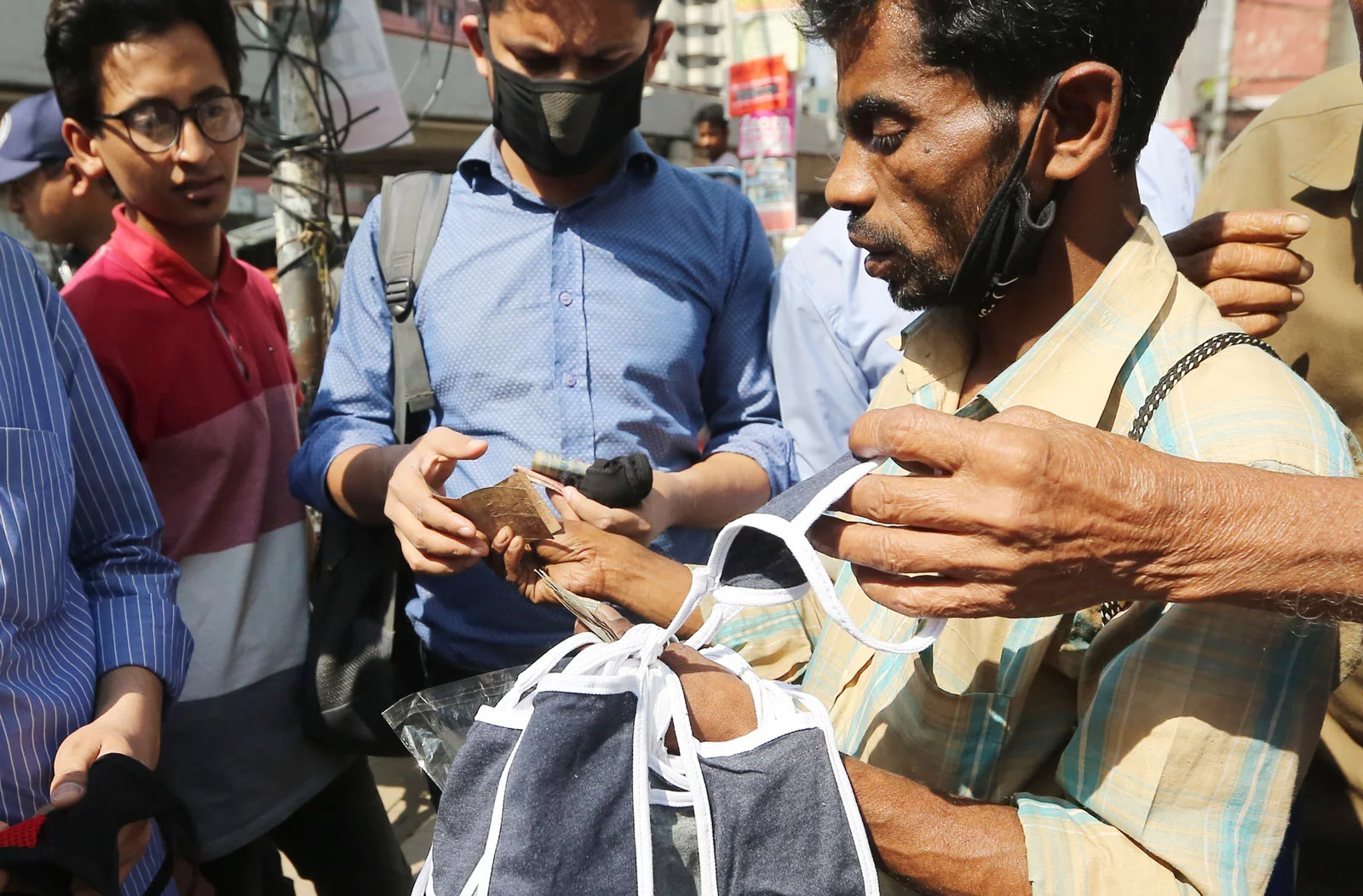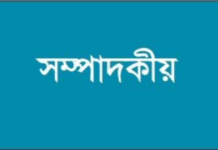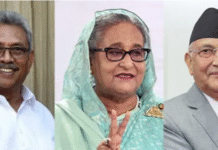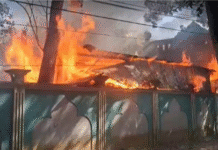
The case for universal mask use to slow the spread of covid-19 is disarmingly simple: people with respiratory illnesses must wear masks to avoid infecting others and people without the disease can wear a mask as a barrier to infection. Yet in many parts of the globe policy-makers are struggling to identify and implement effective mask policies. In large part, this is because of the novelty of the virus: nothing yet is conclusive and everything could change with the next study. But in the meantime, every person must wake up in the morning and decide what steps to take to prevent the spread of covid-19. Policy-makers must create guidelines to encourage sound behaviours and choices.
According to information released by Emerging Infectious Diseases in May, an estimated 50–80% of transmission is through individuals who are asymptomatic or pre-symptomatic. Looking at emerging data trends, there is now clear enough evidence supporting the effectiveness of masks at preventing transmission such that universal mask requirements are likely warranted, to contain the virus, save lives and reopen economies sooner. However, while the lab-tested case for mask adoption is overwhelming, there remains considerable uncertainty about the exact effectiveness of mask use in the “real world.” Does wearing a mask while going about regular activities actually stop the virus? And, with so many masks, what kinds work best and are realistic to wear all day?
 The focus must now shift beyond whether we need universal mask adoption to how policy-makers can achieve it – and what the actual expected benefits are. While the vast majority of people in the world live in countries that either mandate public mask use or strongly recommend it, actual mask use remains low in many countries. In a recent YouGov survey of 26 countries, Italy was the only country outside of East Asia where more than 80% of people reported wearing masks in public. In Australia, Denmark, Finland, Norway, Sweden and the UK, fewer than 20% report wearing masks. Government mandates versus actual real-world implementation of – and adherence to – such mandates are very different things.
The focus must now shift beyond whether we need universal mask adoption to how policy-makers can achieve it – and what the actual expected benefits are. While the vast majority of people in the world live in countries that either mandate public mask use or strongly recommend it, actual mask use remains low in many countries. In a recent YouGov survey of 26 countries, Italy was the only country outside of East Asia where more than 80% of people reported wearing masks in public. In Australia, Denmark, Finland, Norway, Sweden and the UK, fewer than 20% report wearing masks. Government mandates versus actual real-world implementation of – and adherence to – such mandates are very different things.
Perhaps mask-wearing norms are hard-won but stable? Once people are convinced of the need to wear masks, perhaps they will continue to do so? Data we have collected in Bangladesh and rural Nepal suggests the dynamics are far more complex.
Investigating mask use in the Bangladeshi context is also crucial. Given the population density and the limited availability of covid-ready health care units, preventative measures are imperative. In preparation for a randomised controlled trial to evaluate the impact of mask use on the spread of respiratory illnesses in Bangladesh, we assembled researchers from Yale, Stanford, UC Berkeley, North South University and Innovations for Poverty Action to look at many different pieces of data on mask use. One study by LightCastle Partners suggested that, in Dhaka, 12% of respondents regularly wore masks as of 5–7 April 2020. Around this time, the number of official covid-19 cases in Bangladesh was between 50 and 200, and the number of (untested) infections surely much larger.
As Bangladesh initiated a lockdown, the government issued a strong directive recommending that everyone wear a mask in public, and police and local officials enforced this policy through shaming and regulatory actions. Anecdotally, we heard that mask use was rapidly increasing. We surveyed 2,500 people in both urban and rural areas throughout Bangladesh by phone on 22 April 2020: 97% reported owning a mask, with near-uniform adoption across every region of the country. We worried that people might be telling us what they thought we wanted to hear, so we also asked them to estimate what fraction of other people they encountered in public were wearing masks. This too was consistently above 80%. Contemporary surveys in Ghana, India and Nepal showed similarly rapid increases in mask usage. At the time, there were 400 reported covid-19 cases in Bangladesh.
In light of this evidence, we decided that the problem of mask use in Bangladesh had been solved. Not only that, but the pattern boded well for the rest of the world. Perhaps, except in countries like the UK and the UK, where mask use had become heavily politicized, mask adoption would be quick as the threat of covid-19 became apparent.
It turns out we were completely mistaken. A few weeks later, we began to hear anecdotal reports that conflicted with our original survey. Our collaborators in Bangladesh suggested that local officials had stopped publicly enforcing mask use and that many people appeared to be walking around in public without masks. From 21–23 May, we conducted a second telephone survey. In this, 86% of people reported that they wore a mask in public. But there was an ominous result: survey respondents reported that only 60% of other people they saw in public were wearing masks.
Given concerns about self-reported survey responses, we conducted a massive data-gathering exercise where we used direct observation to determine the ground-truth. We sent surveyors to more than 1,400 public locations throughout Bangladesh and had them count the number of people they saw with and without masks. They counted more than 150,000 people. Of these, 48% were wearing masks. In mosques – indoor spaces where transmission concerns are especially severe – only 37% wore masks. As of 23 May, there were 32,000 confirmed covid-19 cases in Bangladesh. The risk was direr than ever but mask use had faded owing to a mix of complacency and relaxed messaging and enforcement.
The idea that mask norms are hard to change but stable once achieved is not correct: the data in Bangladesh indicates that norms can change rapidly in both directions. In the world’s poorest countries, the problem is not just one of providing masks but also of creating conditions that support consistent mask use. What does that support look like? In addition to distribution and availability, we need clear, consistent messaging to underscore the importance of mask use, and we need enforcement by local officials and communities. Enforcement need not mean punishing those without masks, but rather having trusted community leaders like mosque imams and headmasters make direct appeals, asking those without masks to please put one on and providing them with a mask if they do not have one.
 The benefits of mask use in Bangladesh also must be better understood. It is one thing to know that masks have the potential to prevent disease; it is another to know they work effectively for active members of the community. Concrete knowledge of the protective effects of masks for both individuals and the people they care about may be important for lasting uptake. It is also key for policy-makers to understand the full ramifications of how they allocate their resources to different covid-19 prevention and mitigation strategies.
The benefits of mask use in Bangladesh also must be better understood. It is one thing to know that masks have the potential to prevent disease; it is another to know they work effectively for active members of the community. Concrete knowledge of the protective effects of masks for both individuals and the people they care about may be important for lasting uptake. It is also key for policy-makers to understand the full ramifications of how they allocate their resources to different covid-19 prevention and mitigation strategies.
To contribute to tangible, evidence-based covid-19 prevention policies, we are now embarking on a rapid results research study throughout Bangladesh. The primary goals are to ascertain the value of day-to-day mask use in preventing transmission and which policies and types of mask effectively encourage regular mask use. In Bangladesh, we are testing several possible messaging interventions in mosques and markets. In villages, we will test mask distribution methods and social incentives. In all cases, the study will evaluate both whether these interventions increase mask use (measured by direct observation by our surveyors) and whether they impede the spread of respiratory disease, measured by reported symptoms and temperature readings.
The disastrous public health and economic consequences of covid-19 call for large-scale government responses to fight the disease. Government spending on testing and tracing, vaccine testing and development and protective equipment for health care workers lags far behind where it should be. Masks are among the lowest-hanging fruit in terms of financial cost. Cloth masks cost less than a dollar to produce and preliminary research indicates each person who wears one generates thousands of dollars in health benefits. But promoting mask uptake requires the coordination of official mandates and recommendations, distribution, communication and enforcement. Mask adoption is a more complex problem than it seems at first glance, but it is a problem worth solving: if Bangladesh can build consistent mask-wearing norms, it can potentially save hundreds of thousands of lives at very low cost.
Photo ©️ Mahmud Hossain Opu










